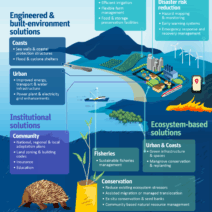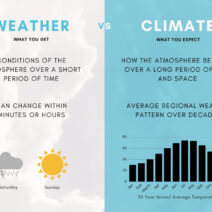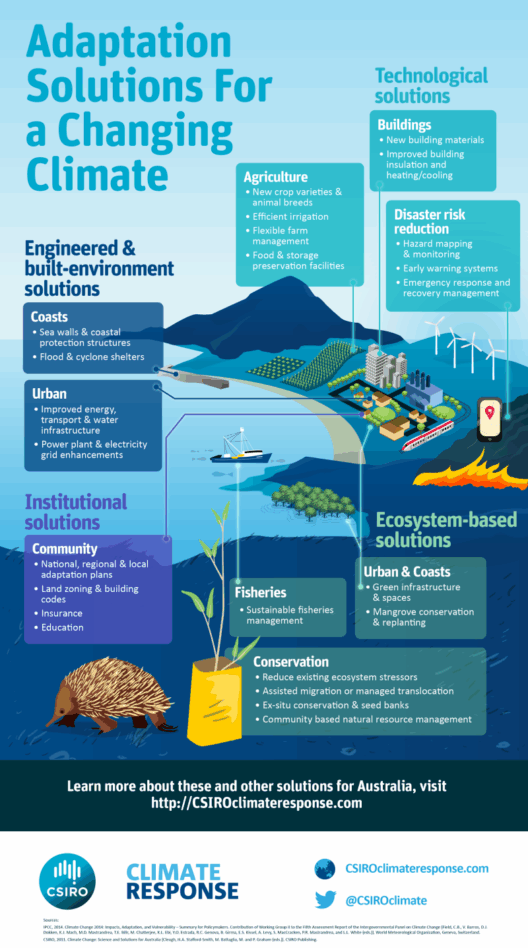As climate change continues to escalate, its repercussions reverberate throughout ecosystems worldwide. Among the most alarming impacts is the jeopardization of plant life, particularly large, vital species often referred to as “Green Giants.” These towering trees and robust plants are not only fundamental to biodiversity but also crucial in sustaining ecological balance. This discourse delves into the various ramifications of global warming on plant life, encompassing essential aspects like biodiversity, habitat loss, phenology shifts, invasive species, and conservation strategies.
To fully appreciate the gravity of the situation, one must first acknowledge the diversity of plant life. From the majestic redwoods of the California coast to the patriarchal baobabs of Africa, these trees exemplify resilience and longevity. However, as temperatures rise and precipitation patterns shift, these species face unprecedented challenges. The symbiotic relationships formed over millennia within their ecosystems now hang in the balance, as climate change disrupts their intricate web of interdependencies.
Biodiversity is the cornerstone of resilient ecosystems. The more diverse an ecosystem is, the more resilient it becomes to environmental changes. However, with rising global temperatures, many plant species are susceptible to extinction. For instance, certain endemic plants, which have adapted to specific microclimates, are increasingly unable to cope with the shifting climatic conditions. The loss of these species not only diminishes biodiversity but also threatens the myriad organisms that rely on them for sustenance and habitat. This cascading effect can lead to ecosystem collapse, wherein the disappearance of one species triggers a chain reaction that affects others.
One of the significant impacts of global warming on plant life is the alteration of phenology—the timing of seasonal events in the plant life cycle. For example, flowering times, leaf unfurling, and fruit ripening are all time-sensitive phenomena governed by environmental cues such as temperature and rainfall. As temperatures increase, many plants are beginning to bloom earlier than usual, disrupting synchrony with pollinators and other species. If pollinators emerge before flowering plants are available or if seed dispersers are misaligned with fruit ripening, reproductive success can be severely compromised, further exacerbating the decline of vulnerable species.
Moreover, habitat loss attributable to climate change cannot be overlooked. Temperate forests are shifting poleward, while arid and semi-arid regions are expanding. Such transitions lead to the fragmentation of habitats essential for plant survival. Species adapted to one particular biome may find it challenging to migrate to newly suitable environments, especially if geographical barriers impede their movement. Forests, wetlands, and grasslands—once rich with flora—are increasingly being replaced by monocultures or urban landscapes, further diminishing biodiversity and contributing to ecological homogenization.
Compounding these issues is the proliferation of invasive species, which can flourish in environments altered by climate change. With shifting climate zones, invasive plants can establish themselves in new areas, outcompeting native species that are already under stress from changing conditions. The introduction of these non-native species disrupts local ecosystems, leading to further decline of indigenous flora and impacting the wildlife that depends on them. This invasive threat often goes unchecked, as native plants become increasingly vulnerable, unable to adapt quickly enough to outpace the rapidly changing climate.
The responses to these multifaceted threats must involve robust conservation strategies. Strategies such as reforestation and habitat restoration play pivotal roles in mitigating the impacts of global warming on plant life. This involves not only planting trees but also ensuring that they are native species that can thrive in the local conditions, thereby reinforcing local biodiversity. Protected areas must also be expanded and effectively managed to safeguard critical habitats from encroaching development and climate impacts.
Furthermore, fostering genetic diversity within plant populations is essential. Increased genetic variability offers a buffer against environmental changes, enabling populations to adapt more readily to shifting conditions. For example, preserving seed banks—including those of rare and endangered species—ensures that genetic resources are available for future restoration efforts. In addition, promoting community-based conservation initiatives empowers local populations to take charge of their ecological heritage, fostering deeper connections between humans and nature.
Education and public awareness are paramount in the fight against the decline of Green Giants. Incentivizing conservation efforts through policy frameworks and creating educational programs that highlight the importance of plant biodiversity can foster a culture of stewardship. By engaging communities, we can amplify the understanding of how everyday actions impact the environment, inspiring collective action toward sustainable practices.
In conclusion, the effects of global warming on plant life present a formidable challenge that requires immediate attention. The cascading impacts on biodiversity, shifts in phenology, habitat displacement, and the rise of invasive species all necessitate a concerted effort to preserve our natural world. Protecting our Green Giants is not merely an environmental imperative; it is essential for ensuring the survival of countless species, including our own. As stewards of this planet, we bear the responsibility to advocate for effective conservation measures that will allow these remarkable organisms to thrive amidst the uncertainties of a changing climate. The future of plant life rests in our hands, and it is imperative that we act decisively to safeguard it for generations to come.






